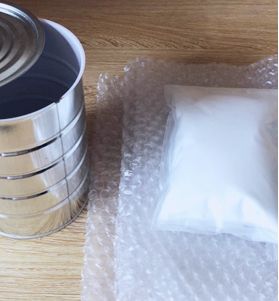Chemical & Physical Properties
- Appearance: White to gray crystalline solid
- Melting Point: ~688°C
- Boiling Point: Decomposes before boiling
- Density: ~0.78 g/cm³
- Solubility:
- Insoluble in organic solvents
- Reacts with water, releasing hydrogen gas (H₂)
- Thermal Stability: Stable under anhydrous, inert conditions
- Electrical Conductivity: Acts as an ionic conductor at high temperatures
Key Features & Benefits
✅ High Hydrogen Storage Capacity: Key material for hydrogen-based energy systems
✅ Strong Reducing Agent: Effective for metal reduction and organic synthesis
✅ High Thermal Stability: Suitable for high-temperature industrial applications
✅ Lightweight & High Energy Density: Ideal for aerospace and nuclear applications
Industrial & Laboratory Applications
Hydrogen Storage & Fuel Cell Research
- Hydrogen Source:
- Releases hydrogen gas upon reaction with water or acids.
- Used in portable hydrogen fuel systems.
- Hydrogen Storage Material:
- Investigated for solid-state hydrogen storage in advanced energy systems.
Nuclear & Aerospace Applications
- Neutron Moderator in Nuclear Reactors:
- Utilized in high-energy applications due to its low atomic weight and neutron absorption properties.
- High-Performance Fuel Additive:
- Used in advanced propulsion and aerospace research.
Metallurgy & Chemical Processing
- Metal Hydride Formation:
- Used to produce lithium-based alloys and other hydrides.
- Desulfurization & Deoxidation Agent:
- Employed in refining and purification of metals.
Organic & Industrial Synthesis
- Reducing Agent in Chemical Reactions:
- Converts metal oxides to pure metals.
- Reduces certain organic functional groups under controlled conditions.
Handling & Safety Considerations
⚠️ Highly Reactive & Moisture-Sensitive!
- Water Sensitivity: Reacts violently with water, producing lithium hydroxide and hydrogen gas (H₂), which is flammable.
- Air Sensitivity: Reacts with moisture in the air, leading to decomposition.
- Handling Precautions:
- Store and handle under anhydrous, inert gas conditions (argon or nitrogen).
- Avoid exposure to water and humid environments.
- Use protective gloves, goggles, and flame-resistant clothing when handling.
Storage & Packaging
- Storage Conditions:
- Keep in sealed, moisture-proof containers under inert gas.
- Store in a cool, dry place away from oxidizers and acids.
- Personal Protective Equipment (PPE):
- Chemical-resistant gloves, safety goggles, and flame-resistant clothing.
- Handle in a fume hood or inert-atmosphere glovebox.
Available in:
- 1kg sealed moisture-proof cylinder
Lithium Hydride (LiH) is a grayish-white, crystalline, and highly reactive inorganic compound known for its strong reducing properties and high hydrogen storage capacity. Due to its lightweight and high energy density, LiH is widely used in hydrogen storage applications, nuclear energy systems, metallurgy, and organic synthesis. It readily reacts with water, releasing hydrogen gas, making it a valuable reagent in chemical and industrial processes.




